#Queens Gambit Declined
Explore tagged Tumblr posts
Text

The Chess Match: Queen's Gambit Declined
2K notes
·
View notes
Text
in chess civilization, nobody accepts the queens gambit, its much safer to defend your pawn for the declined variation
14 notes
·
View notes
Text
Happy birthday Viswanathan "Vishy" Anand!
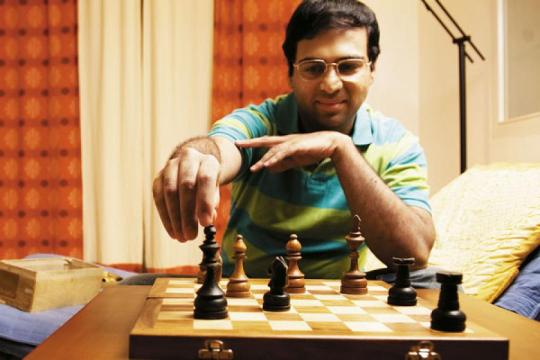
Vishy Anand, one of my favourite commentators from recent World Championships (he just seems like such a lovely guy and his analysis is always interesting and well explained), is an Indian chess grandmaster and a former five-time World Chess Champion. The FIRST grandmaster from India (he won the title in 1988) which is hard to believe given how many great Indian chess players there are now, he has the 8th highest peak FIDE raiting of all time. He remains the only player to have won the World Chess Championship in tournament, match, and knockout format, as well as rapid time controls.
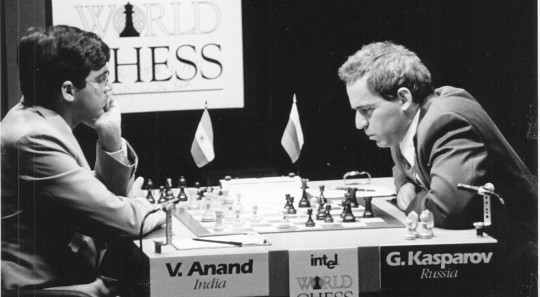
Vishy playing Kasparov, 1995.
As a teenager people called him "Lightning Kid" for his rapid playing speed, and later GMs who faced him often described him as one of the all-time greats alongside Garry Kasparov (a logical comparison given the schism in the World Championship and the fact most top GMs would have played both so could compare).
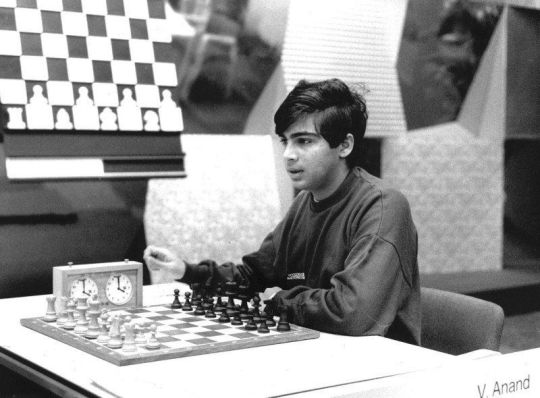
As a lightning fast teenager in the 1980s.
Wikipedia describes him as "a well-liked figure throughout the chess world for two decades, evidenced by the fact that Kasparov, Kramnik, and Carlsen, all of whom were rivals for the world championship during Anand's career, each aided him in his preparations for the 2010 World Chess Championship" which is something I massively admire in sports people - the seemingly rare ability to be a top competitor AND be nice to people.
Check out his game 6 win against Karpov in the 1998 World Championship match for a great win at an important moment. Karpov had won the first four games, Vishy made a draw in game 5, and NEEDED to win. So what does he do? He plays the Trompowsky Attack (1. d4 Nf6 2. Bg5) - rarely seen at GM level - and wins in 42 moves! Seriously, go google and admire. Sadly (for me at least since I'm a fan) he lost the WC in the tiebreaker games and didn't manage to become World Champion until two years later when he became the first world champion from Asia and the first world champion from outside the ex-Soviet Union since Bobby Fischer.
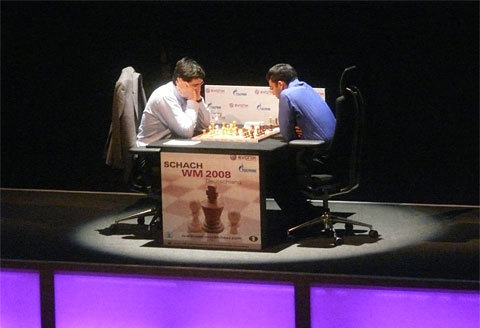
Anand v. Kramnik at the 2008 World Championship, game 3.
OR check out game 3 of his World Championship match against Kramnik in 2008. Here Vishy has the black pieces playing against Kramnik's Queen's Gambit Declined - they go into a really tactically sharp line known as the Blumenfeld Attack (this is part of the Semi-Slav defence, classical merin variation if you want to look it up). On move 14 Vishy plays a novelty - a new idea - that Kramnik needs to refute if he's to win. Vishy's idea is to just give up a pawn (which is usually defended) in favour of attacking the white king. Two pawns down, Vishy rejects the possibility of a draw and goes on the attack with Kramnik's king on the run. It's exciting stuff and unbelievably tense when you imagine the WC conditions they were playing in!
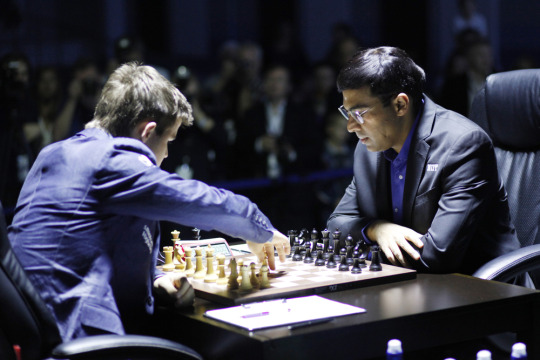
Vishy about to beat defending champion Magnus Carlsen in Game 3 of the 2014 World Chess Championship in Sochi.
His career is way too long and too well documented to be worth going into any greater detail - google is your friend here - but what a great player. Well worth delving into his games, not least as he was one of the first to embrace computer prep so that alone is an interesting development.
#Viswanathan Anand#vishy anand#chess#chess player#magnus carlsen#garry kasparov#world chess champion#world chess championship#born on this day#happy birthday#chess players
25 notes
·
View notes
Text
Chess Blog Day #33 - The Queen's Gambit
The queen's gambit is characterised by the moves 1.d4 d5 2.c4
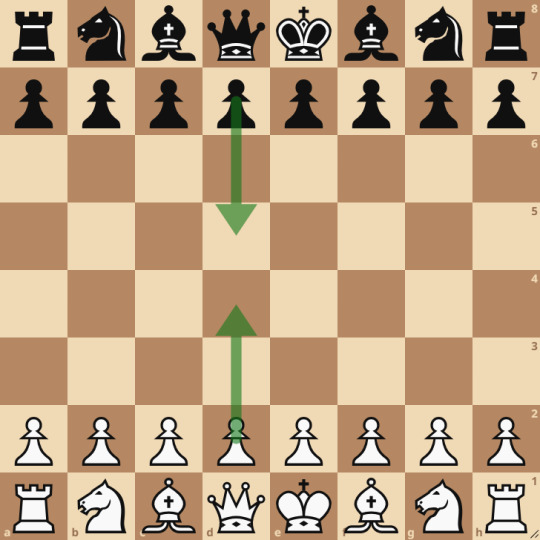

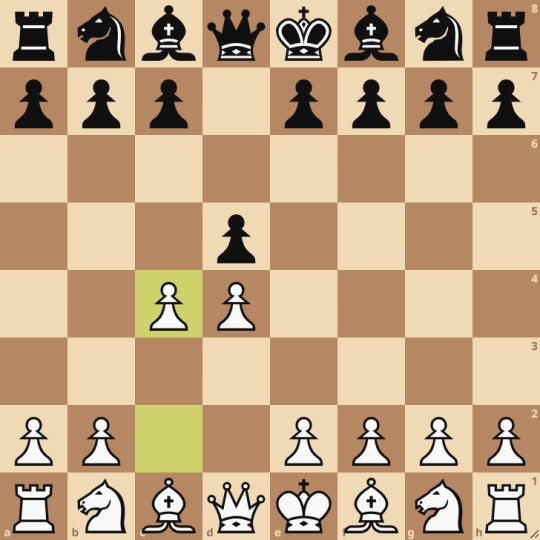
It's called a gambit because white is giving up the pawn since it's not defended.
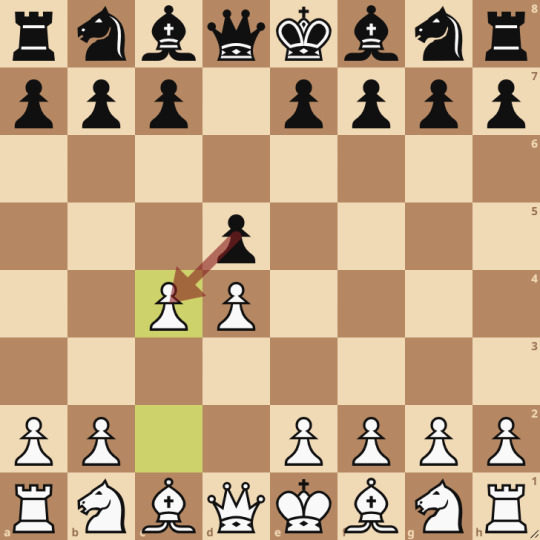
There are two main responses to the Queen's Gambit (but loads of others, too!):
Queen's Gambit Accepted
Queen's Gambit Declined
These are called the QGA and QGD for short.
They look like this:
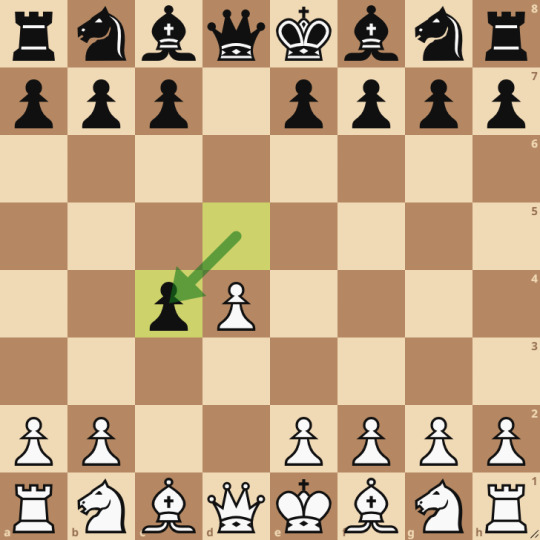
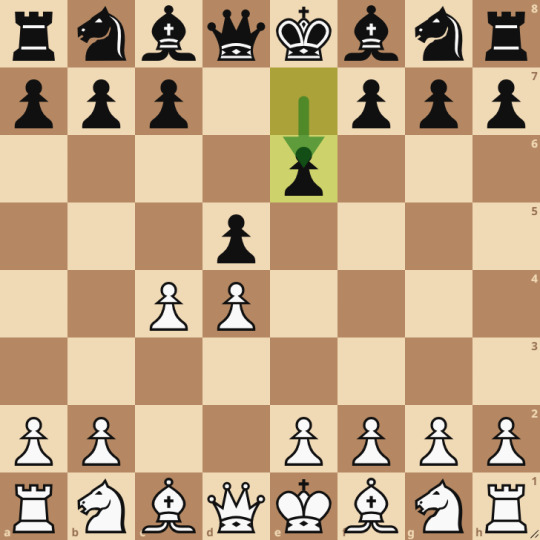
The QGD is much more common, but they are both good.
Actually, the Queen's Gambit isn't a real gambit. This is because the pawn can almost always be won back.
For example in the QGA white usually plays 3.e4 attacking the pawn.
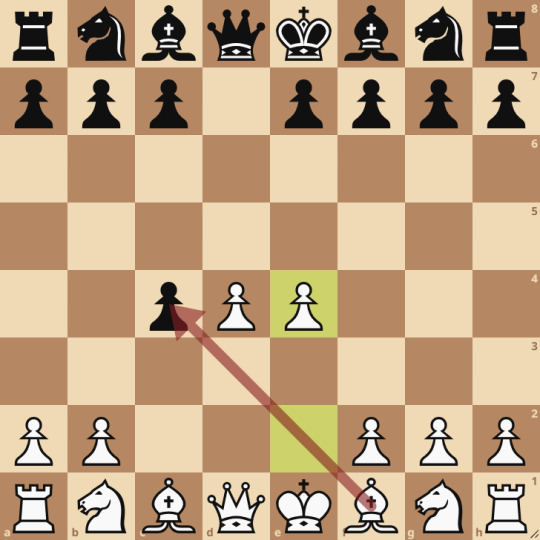
There are only two ways of defending it, 3...b5 and 3...Be6.
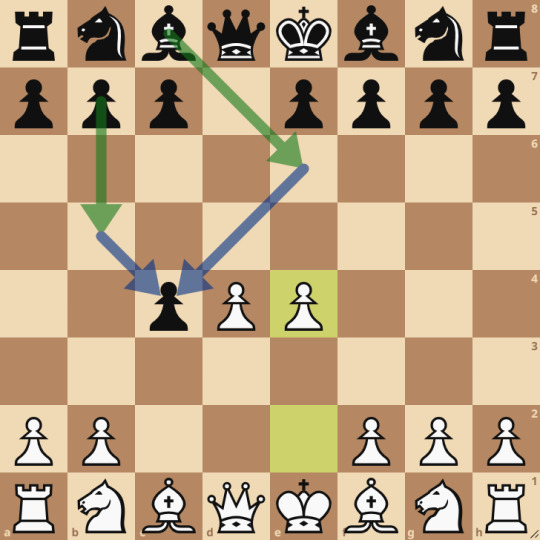
After 3...Be6?, white has the simple 4.d5, and there isn't time to defend the pawn because the bishop is attacked.
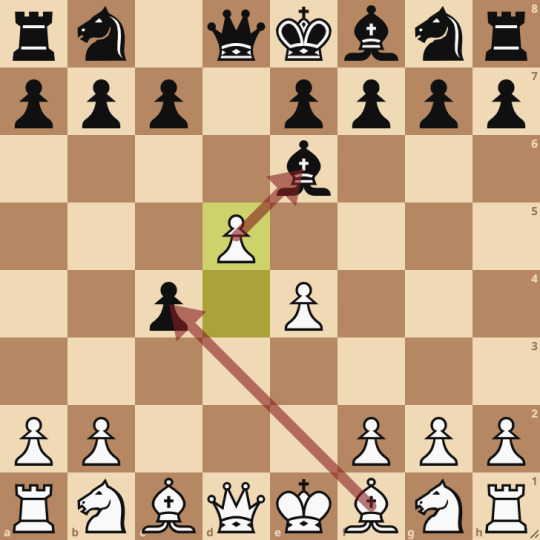
After 3...b5 a bunch of complicated things can happen but both players usually end up with the same number of pawns.
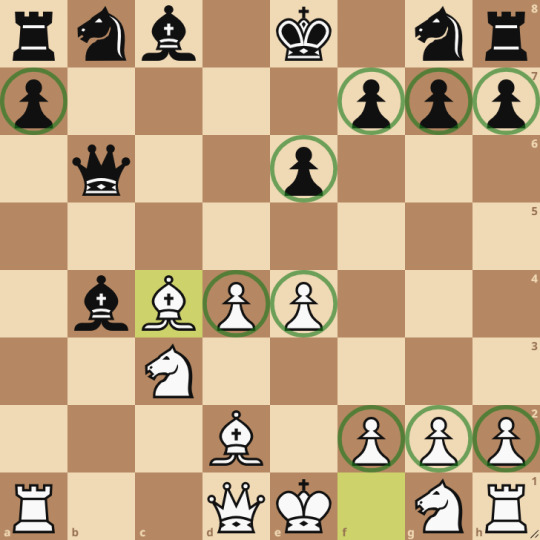
You might be wondering if, since there's a Queen's Gambit, there's a King's Gambit. Well, there is.
Tomorrow: The King's Gambit.
16 notes
·
View notes
Text
Chess moves named after the Octopath travelers
Ophilia's Gambit Declined into Ophilia's Opening (officially Cleric's Opening)

White pawns occupy d4 and d5. Black responds in kind to decline. To make this truly Ophilia's Opening, move your bishops.
Cyrus' Opening (also Gay King Opening)

Sac the Queen for literally no reason at all. (Cyrus plays as black because he can)
Olberic's Opening
Punch your opponent in the face before you sit down. This is a legal move and serves to confuse them so they open poorly.
Azelhart Opening

Open with both your knights and then longcastle asap. Presented is one possible variant.
Alfyn's Mate
You don't know how to play chess. Offer a draw as soon as possible.
Therion's Gambit (aka CHEATING)
Steal your opponent's pieces as you play. Add captured pieces back to the board while they're distracted. Cheat as much as humanly possible until the other resigns.
H'annit's Gambit
Get your cat to roll around on the board until they decide this game is unplayable. Only to be used in extreme circumstances.
#this started off serious#octopath traveler#Ophilia clement#Cyrus albright#olberic eisenberg#primrose azelhart#alfyn greengrass#therion octopath#h'annit octopath#lola can't play chess#these probably all exist but it's funny
4 notes
·
View notes
Text
RECOMMENDING PERIOD DRAMAS - PART 1 - TELEVISION
For reference - A period piece should be set against a clear backdrop in the past. It should also embrace that era and take inspiration from its fashion, aesthetics and culture. It could be something set in the 1754 or 1979. This is just a rough guideline to period pieces and some of them do boast realistic elements. There's hopefully something here for everyone.
Note - Not all of these are going to be family shows.
ALL CREATURES GREAT AND SMALL (2020 ONGOING) - Comforting slice of life - Underrated - Wholesome character interactions and arcs - Animals are everywhere but the humans are chaotic and imperfect - Music is quaint and peaceful - Stirs up emotions - Based on novels (about the author's own experiences) EDIT - PROBABLE - VERY LIKELY SLOWBURN - IF YOU KNOW YOU KNOW - THEY ARE ENDGAME
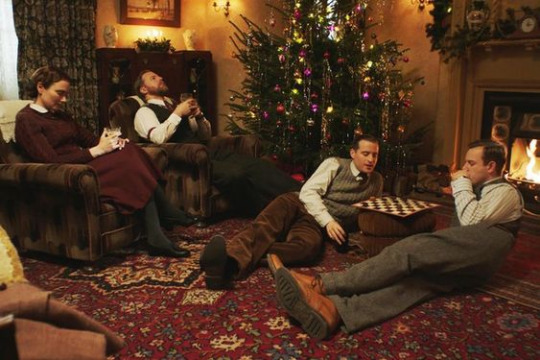
PRIDE AND PREJUDICE (1995) - Takes time with the story and its events - The aesthetic is admirable - The relationships between the sisters (heartwarming) - A necessary look into the era conflicts of marriage and finding a partner - A feel good classic that must be protected at all costs
EDIT T- THAT ONE SCENE - IN THE LAKE/POND

NORTH AND SOUTH (2004) - Unexplored aspects of history - Austinian influences - The romance takes time - Conflict both interpersonal and external - Idealism and reality (questioned and challenged) - You will cry
EDIT - THE TRAINSTATION - NO C0NTEXT THAT IS IT
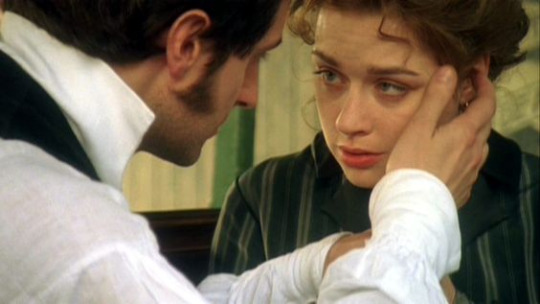
DOWNTON ABBEY (2010) - Spans through the years - Interesting look at class, status and the upstairs downstairs relationships - The soundtrack and the sets and the locations (breathtaking) - Change and the need for it - Don't have attachments to characters

BRIDGERTON (2020 ONGOING) - The importance of bonds - Finding yourself - Falling in love and finding out the vulnerabilities within you - questions duty, affection, marriage - Brotherly relationships and sisterly relationships that are fulfilling and chaotic - The one is someone you never expected, but it is someone you grew to know along the way
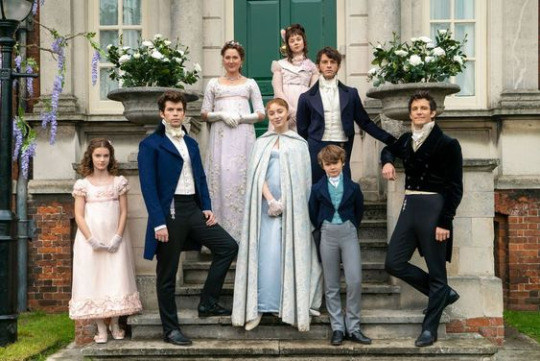
STRANGER THINGS (2016 ONGOING) - The not so distant past - The full on embracing of the 80s aesthetic - Characters arcs that are still evolving - An indie style season one - The soundtrack of nostalgia - Don't have affection for characters - Supernatural elements based on folklore and Dungeons and Dragons

ANNE WITH AN E (2017) - Wholesome - Inspiring - Innovative but honors core themes and values expressed in the original text - Uplifting - A ray of sunshine - Slow burn to beat all slow burns - Established found family - Uplifting and thought provoking - Addresses issues pertaining to youth, class, race, sexuality and gender

OUTLANDER (2014 ONGOING) - Time travel - Return to a home that is unfamiliar - Back and forth - Twists and turns - Healing and acceptance - Moving on and adapting - Heavenly soundtrack - Love and its turbulence and aftermath - Extensive list of characters and motives - Spans through the decades

THE QUEEN'S GAMBIT (2020) - Themes of decline and fame - Stardom and achievements - Symbolically relevant fashion - The ups and downs of a life under the spotlight - following the years of a child prodigy (from the rise to the limbo to everything in between) - Highlights character evolution through artistic choices

THE ADVENTURES OF SHERLOCK HOLMES (1984)
Mostly episodic - One of the best incarnations of the titular character - Comedy, suspense and chaos ensues but there is something for everyone - captures the period of television pretty well - There is the mystery and then there is their own history (the misadventures and banter) - Jeremy Brett truly captured the essence of the man and the mind
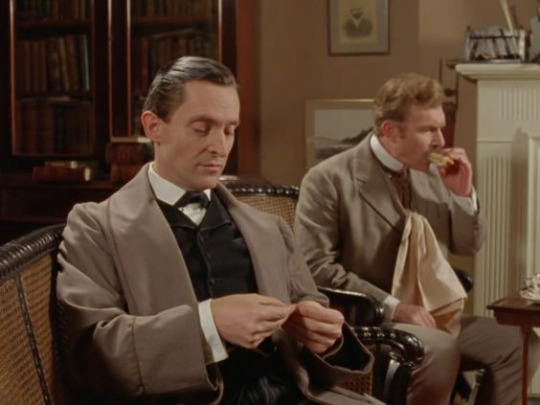
GENTLEMAN JACK (2019) - Based on true accounts - An LGBT period piece - Costumes that enhance characters and their ambitions - Romance complements the characters but there is urgency beyond that - The absurd styles and aesthetics of the era are embraced

THE GREAT AND DICKINSON (2020 ONGOING) (2019) - Similar sense of humor - Modernism meets the past - Based on lives of two extraordinary women - The costumes and the set designs are phenomenal and they capture the essence and feel of the shows - Wit and humor - Truth meets fictions


OUR FLAG MEANS DEATH (2022 ONGOING) - One of the best depictions of found family - Truth meets fiction - A comedy that will move you to tears - Canon Queer relationships - Pirates - Using the comedy to direct attention to societal issues and internal conflicts and trauma - Tears will come
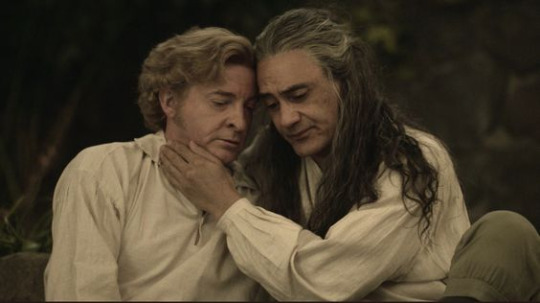
OTHER RECOMMENDATIONS
POLDARK - About change - Embracing thing and finding new things in life - Return to home that isn't a home - Growing past animosities and finding a piece of youself

MAD MEN - The antihero characters - Moral complexities - the 60s and the world of business and the people who climbed the ranks and the people who lost their ranks - Incredible use of costumes (to express the change of era - and growth of characters)

#period drama#televsion#outlander#mad men#all creatures great and small#sherlock holmes#omfd#our flag means death#poldark#the great#dickinson#bridgerton#stranger things#downton abbey#anne with an e#queen's gambit#north and south 2004#pride and prejudice 1995
11 notes
·
View notes
Text
Common Openings in Chess Game

Reti Opening
The Reti opening (1. Nf3) is named after the great chess master Richard Reti. Like 1. d4 and 1. c4, the Reti generally leads to closed positions in the Chess Set, and all three moves can transpose into similar setups. One possible formation for white is the king's Indian attack.
Indian Defenses
After 1. d4, black is not obligated to play d5 in response. The best answer to d4 is Nf6, which leads to a collection of openings known as the Indian defenses. While less solid than the classical d5, these openings offer more immediate opportunities for counterplay.
Many famous lines arise after Nf6: the king's Indian defense, Nimzo-Indian defense, queen's Indian defense, and the Grunfeld defense.
English Opening
The English opening is a flexible choice for white. The English often transposes into openings normally seen after 1. d4, either exactly or with slight variations due to move order. You can also enter a "reversed" Sicilian defense if black responds with e5, whereas white is playing the Sicilian defense with an extra tempo.
One well-known setup that can arise from the English opening is the Hedgehog defense.
Queen's Gambit
White players who prefer a quieter, more positional game tend to choose 1. d4 to 1. e4, after which the c4 break is the best way to play for an advantage either on the second move or soon after. The queen's gambit, marked by the movements 1. d4, d5, and 2. c4, is one of the oldest chess openings. This classical approach pretends to offer a pawn. In reality, black cannot expect to hold onto the pawn if the player chooses to capture it in exchange for a stronger center.
Black has several options: the queen's gambit is accepted, the queen's gambit declined, and the Slav defense.
5 notes
·
View notes
Text
Kattskiy vs Felynov, Budapest 2021, inversion of Queen's Gambit declined, checkmate in four, winner Kattskiy.
Cheating
18K notes
·
View notes
Text
Ruy Lopez , jovaba London , Kings indian, The dragon, Rossolimo, The French Defense, queens gambit declined, the Sicilian, the nadjorf, the
0 notes
Text
Chastity’s French Defense Study
I like the French Defense because it naturally seems to help me build a reversed black Queen’s Gambit. I consider it the perfect sister opening to Queen’s Gambit for White but it looks a little bit different. I also like it because the pawn structure on black’s side looks a lot like the Queen’s Gambit declined position. It’s similar enough that it feels natural for someone like me who has played…
0 notes
Text
The Art of Sacrifice: Calculated Risks for Greater Positional Advantage by Joseph Kunin
Chess, often described as the ultimate game of strategy and intellect, hinges on the nuanced balance between calculation and foresight. For beginners venturing into the world of chess, understanding the art of sacrifice is not merely a tactical choice but a fundamental aspect of mastering the game. Sacrifice in chess involves the deliberate relinquishment of material—be it pawns, knights, bishops, rooks, or even the queen—with the strategic intent of gaining a significant positional or tactical advantage. This blog explores the profound impact of sacrificial play in chess, offering insights into how calculated risks can alter the course of a game, unsettle opponents, and pave the way for decisive victories.
In chess, sacrifices are not random acts of generosity but strategic maneuvers that leverage immediate gains or long-term benefits. By sacrificing a lesser piece to capture a more valuable one, players can disrupt opponent's plans, seize control of key squares, or create formidable threats that force concessions. This proactive approach not only challenges opponents to navigate through complex positions but also tests their ability to withstand pressure and maintain composure under strategic duress. As beginners grasp the subtleties of sacrificial play, they uncover the intricacies of board dynamics and positional awareness, essential for advancing their chess proficiency beyond basic moves and into strategic mastery.
Understanding Sacrifice in Chess
Sacrifice in chess involves willingly giving up a piece or pawn to gain a tactical or positional advantage. Beginners often hesitate when considering sacrifices, fearing loss without immediate gain. However, strategic sacrifices can open up lines, create mating threats, or weaken opponent's defenses, setting the stage for a decisive attack.
Active players recognize that sacrifices are not merely about material exchange but rather a calculated maneuver to shift the balance of power in their favor. By sacrificing material as noted by chess buffs like Joseph Kunin, players can gain tempo, initiative, or positional superiority, forcing opponents into defensive positions and limiting their options.
Types of Sacrifices and When to Use Them
In chess, sacrifices can take various forms depending on the position and strategic goals. A pawn sacrifice, for instance, may lead to rapid development or control of key squares. Sacrificing a minor piece (bishop or knight) could expose the opponent's king or disrupt their pawn structure, creating weaknesses to exploit later in the game.
Timing is crucial when deciding to sacrifice in chess. Chess enthusiasts such as Joseph Kunin emphasize that beginners should assess the potential benefits of a sacrifice against possible drawbacks, such as loss of material or weakening their own position. Effective sacrifices often involve anticipating opponent's responses and calculating several moves ahead to ensure tactical superiority.
Opening Strategies: Sacrificial Gambits
Certain chess openings, known as gambits, involve intentional sacrifices of pawns or pieces to gain rapid development and initiative. Gambits like the King's Gambit or Queen's Gambit Accepted are popular among players seeking aggressive play and early control of the center. These openings teach beginners the value of initiative and dynamic piece play from the start.
Understanding the principles behind sacrificial gambits helps beginners grasp the importance of tempo and initiative in chess. By accepting or declining gambits based on positional considerations and long-term strategy as underscored by chess buffs including Joseph Kunin, players can steer the game towards favorable outcomes while keeping opponents on the defensive.
Middle Game Tactics: Sacrificial Combinations
In the middle game, sacrifices often emerge as tactical combinations aimed at breaking opponent's defenses or securing decisive advantages. Sacrificing a rook or queen to deliver a checkmate or force a winning endgame demonstrates advanced tactical awareness and foresight.
Learning to spot sacrificial combinations involves pattern recognition and calculation skills as highlighted by chess enthusiasts like Joseph Kunin. Beginners can practice tactical puzzles and analyze master games to identify key moments where sacrifices lead to winning positions. By honing tactical acumen, players develop a sharper eye for opportunities to exploit opponent's weaknesses through sacrificial play.
Endgame Mastery: Sacrificial Techniques
Even in the endgame, sacrifices play a pivotal role in securing victory or forcing a draw. Sacrificing material to promote a pawn, create a passed pawn, or achieve a breakthrough demonstrates strategic depth and understanding of endgame principles.
Endgame sacrifices require precise calculation and evaluation of resulting pawn structures or king activity. Beginners should study fundamental endgame positions and practice techniques that utilize sacrifices to transition into winning pawn or mating positions. Mastery of sacrificial techniques in the endgame distinguishes competent players capable of converting advantages into decisive outcomes.
Practical Application and Improvement
To improve in chess, beginners must apply sacrificial concepts in practical games and analyze outcomes to refine their strategic judgment. Regular practice, study of classic games, and participation in tournaments or online chess platforms enhance tactical awareness and decision-making under pressure.
By incorporating sacrificial strategies into their repertoire, beginners develop a versatile playing style that adapts to different opponents and game scenarios. Chess buffs such as Joseph Kunin express that continual learning and strategic experimentation enable players to grow in confidence, deepen their understanding of chess dynamics, and progress towards achieving higher skill levels.
Mastering the art of sacrifice in chess empowers beginners to transform challenging positions into winning opportunities. By embracing strategic sacrifices to gain tempo, control key squares, or exploit opponent's weaknesses, players enhance their tactical proficiency and strategic foresight on the chessboard. As beginners hone their sacrificial skills through practice and study, they embark on a rewarding journey of improvement, resilience, and strategic innovation in the timeless game of chess.
0 notes
Text
Rags to Riches in the Queen's Gambit Declined Ragozin
#chesslesson#chessuccessful#chess#chessuccessfulinfinite#artofblunder#chessposting#smart#queen#4knights#russian#apreende#art#ajedrez#advertising#sicilian#science#sports#entertainment#education#youtube video#youtube#chess pieces#gaming
0 notes
Text
Chess Blog Day #29 - Introduction to Chess Openings
Chess openings are the moves that you make to start a game of chess.
Chess openings are arguably the least important part of chess. Often players can make completely random moves for the first few moves and as long as their position isn't lost they'll be fine.
However, sometimes games are decided in the opening, especially in tricky openings or with opening traps. We saw before how for beginners Scholar's Mate can be hard to defend against.
Playing a good opening is also a great way to maximize your chances, and you have nothing to lose by learning some.
As players improve openings become more important, especially in slower games.
The reason I mentioned them being relatively less important is because many players spend too much time studying openings without winning many more games.
With that out of the way, let's talk about some opening principles.
The main thing you want to achieve in an opening is to control the centre of the board. This is why 1.e4 and 1.d4 are the two most common first moves.
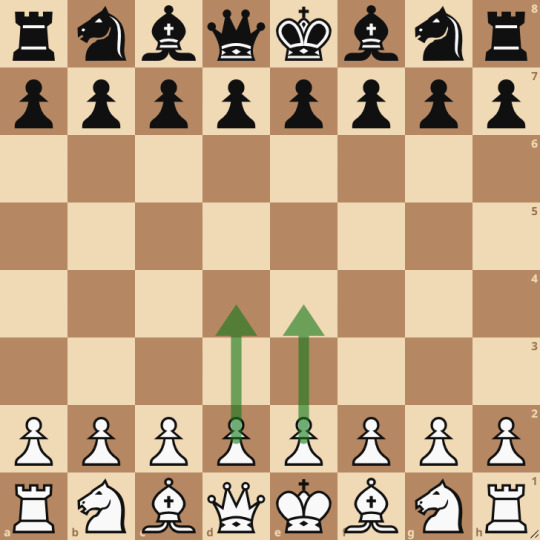
The next thing you want to achieve is minor piece development. Most of the time you should move knights out before bishops. This is because knights only really have two good squares to go to, and most of the time they only really have one. Bishops, on the other hand, have many squares they can move to and so you should wait and see what your opponent does before committing them.
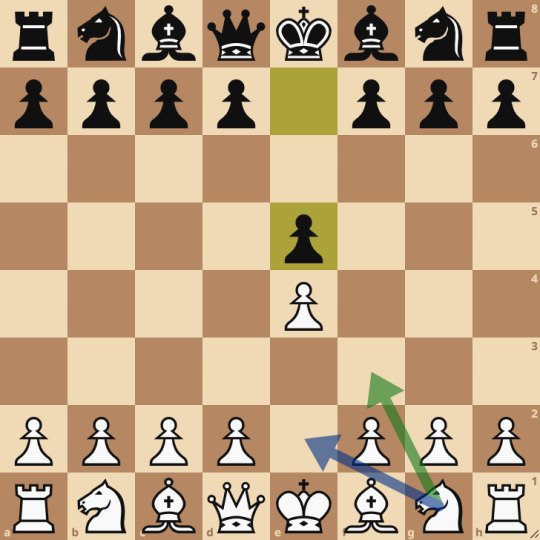
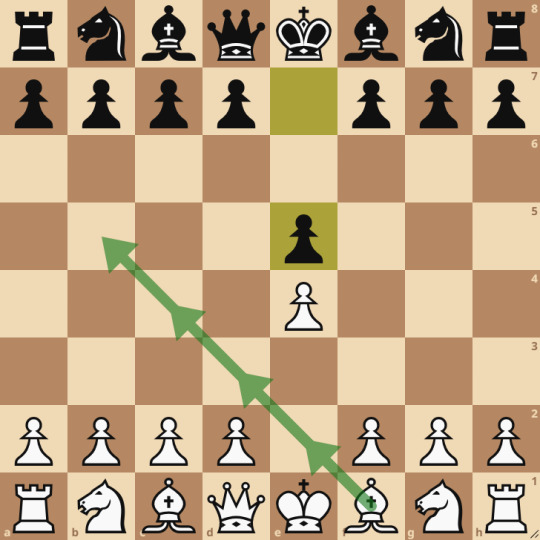
The next thing you want to do is castle. If you're in a position where you would prefer to castle long you will of course also need to move your queen first.
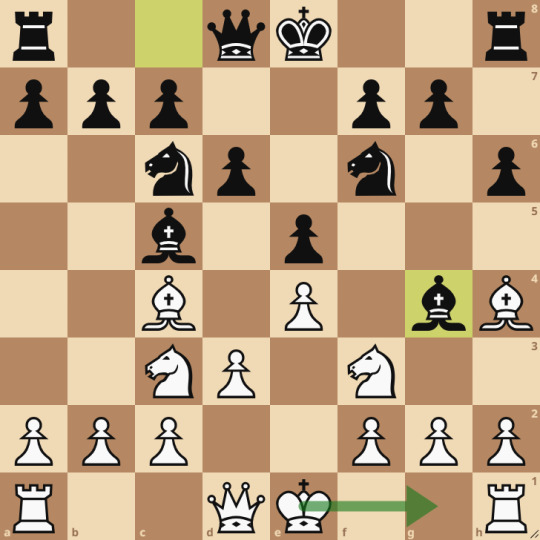
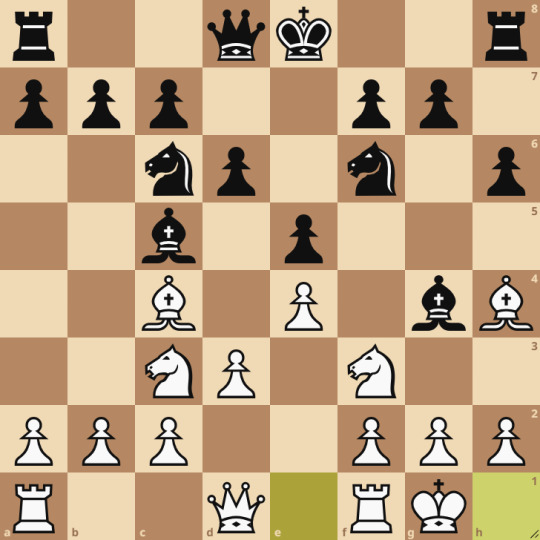
The final stage of the opening is connecting your rooks. This happens once you have castled and the queen, bishops and knights have all moved. The rooks defending each other is very often useful.

Now let's talk about how openings are named. If an opening name ends with the following:
Attack: (eg. Horwitz Attack) This is an aggressive opening for white.
Defence: (eg. King's Indian Defence) This is an opening for black. This is just convention because white goes first. Many "defences" are still quite aggressive. It's useful though because you can immediately tell which side an opening is for just by its name.
Counterattack: (eg. Traxler Counterattack) These are black openings that are definitely aggressive. Usually in response to an attack by white.
Opening: (eg. Spanish Opening) This is an opening by white that isn't quite so agressive.
Game: (eg. Italian Game, not to be confused with the Italian Job) Used to refer to openings for by either side. For some white openings it's used interchangeably with "opening" (Spanish Opening/Spanish Game, call it what you like).
Gambit: (eg. King's Gambit) This is used as a name for openings where one side sacrifices something (almost always a pawn, but sometimes a knight or even more rarely a bishop). This is mostly white openings but not always.
Countergambit: (eg. Falkbeer Countergambit) This is when one player plays a gambit but the other side not only declines the gambit but plays one of their own. It's the Uno reverse card of chess openings. This is mostly black openings but not always.
Now that we've covered the basics of openings, it's time to look at some.
Tomorrow: The Spanish opening.
11 notes
·
View notes
Text
Needs must when the devil drives (PINNAGE)
1. Queen's Gambit Declined
2. his B
3. Its special
4. BISHOP'S GAMBIT
5. Queen's side
6. Queen's action
7. White's advance
8. Queen's Fianchetto
9. Black's R P
10. his time
11. King's Gambit
12. PETROFF'S DEFENCE
13. its main object
14. White's pawn
15. KING'S KNIGHT'S GAMBIT
16. his Rooks
17. QUEEN'S GAMBIT
18. Queen's Fianchetto Defence
19. his pawns
20. his Rook
21. its author
22. his plan
23. Black's turn
24. his pieces
25. its name
26. their opponent
27. King's Fianchetto wherein White commences
28. KING'S GAMBITS
29. Black's textmove
30. King's side
31. Black's Knight's pawn
32. his Bishop
33. Black's countergambit
34. Black's development
35. Knight's pawn
36. King's Bishop
37. his King
38. White's reply
0 notes
Text
They wink at being called ruthless. It is one of their more charming qualities, isn't it? A fine blade has so many uses. And if his laughter lightens their heart, well, that's their own little bonus.
So, the Dragon declines the Queen's Gambit. Expected, yes, but that is what happens when starting with the lowest bid. She lifts a hand in the air and waves it as if to shoo the old offer away.
"I find what someone has or knows in the moment is inconsequential. If you know it is easier, true. Faster. If you do not know, you are among my more capable contacts who may decide to pursue such interests. Perhaps I have something you agree is worth your efforts. Perhaps you decide to pursue the matter because you have found a stone you have yet to look under."
They lean back in their chair. It is relaxing, to be in their element. To find common ground, to find the way forward, problem solving at its finest.
"...You value stories."
[RP Thread, closed @grandpa-dragon ]
The 'app' on their mobile device rings. The seat beneath them is well-worn and plush. The living of the haven often preferred to settle into its deep fluff. They cited a cited a sense of 'coziness'. While the comfort is lost on Fina, the aesthetic is not. The background is meticulous chosen for this moment: lush potted plants, knicknacks on a shelf to the right, almost white lavendar light from the LED on the wall. It isn't often Fina has the freedom to set the mood lighting to their own desires. Best to take advantage while they can.
When the other end of the call picks up, it is to Fina's sunshine-bright smile.
"Stateve bbuone! How are you?"
34 notes
·
View notes
Text
Going through some older paperbacks, found my 1989 copy of Queen’s Gambit Declined by Melinda M. Snodgrass, decided to reread.
It inarguably reads like a slightly older fantasy - there’s that certain Epic Fantasy Style of the 1980s, definitely not contemporary - and I don’t know if I’d say it’s good exactly (entertaining, yes! OH GOD YES) but I would highly suggest you all find a copy, just because:
I had forgotten 1) how absolutely bonkers crazy this book and the entire plot is (like...what even. WHAT EVEN. Have you ever wanted a historical fantasy (or “anti-fantasy,” as the intro calls it) in which a young William of Orange (yes, the historical one) has magical powers and fights Cardinal Mazarin to save the world while flirting with basically everyone? also there’s sex-activated magic? and like...horse shapeshifter magic?? and a Sexy Northern Swordsman? and guest appearances from the King of France, the Duke of Buckingham, and Baruch Spinoza, to name only a few? all set to a backdrop of mysticism drawn straight from Robert Graves’ The White Goddess, which also provides all the chapter opening quotes? have you ever wanted all that? WELL HERE IT IS, PLUS MORE.)
and
2) how incredibly thirstily bisexual this book is. Like...every. single. main character. is the epitome of Disaster Bi. On pretty much every page. I’ll try to take a couple of pictures of some of the best moments, but just know that this book includes:
-a meet-cute in which Haakon (the previously mentioned Sexy Northern Swordsman) tries to cheat William (the Prince) at cards, William catches him in the act, and then they are so mutually impressed by each other that they save each other from a shipwreck while doing Cute Banter over who owes who more
-ONLY ONE BED AT THE INN. WHEN THEY’VE JUST ESCAPED THE SHIPWRECK. (bonus points for, in the words of the novel: “the prince was not having a restful night.”) (extra bonus points for: the innkeeper doesn’t know who they are, but clearly, CLEARLY assumes the pretty young man and the swordsman are here to hook up.)
-everyone constantly, repeatedly, notices a) how pretty William’s eyes are, and b) how attractive his personal pages/attendants are, especially “sweet Hans”
-”You’re not a prince, you’re a brat.” (paired with, “You are an uncouth northern barbarian!”) (also: “I’ve never taken orders well.”) (and also: “...perhaps it is of benefit to me that I’ve fallen in with a man of your experience.”)
-the whole chair thing! (paraphrasing: ”They didn‘t get you a nice chair befitting your prince’s rank at the fancy banquet table. That’s an insult.” “Don’t worry about it--” “I’m getting you a chair.” *Haakon walks off, comes back with the actual king’s chair* “You deserve this one.”)
-”You interrupted me for THAT?!” “You didn’t have to listen!”
-Father Armand: “so...William...was raised in a very...male household...and His Highness...enjoys a good deal of private time in the company of handsome soldiers...”
-to emphasize the bi, not just gay: William’s totally having sex with Sagitta (the woman who’s his magical tutor), but he’s SUPER-CONFLICTED about it, and so is she, because she’s not supposed to fall for him, and also she has Secret Motivations as far as serving the cause of magic (bonus points: he was a virgin before that) (extra bonus points: the moment when she’s all, “Haakon doesn’t need to be here for this one thing we’re doing, he can’t do magic!” and William straight-up says, “I think this has more to do with jealousy than sound magical advice.”)
-that time all THREE of them share a bed! ...at first just like...super-casually, like, sure, we’re all just going to flop into a cuddle-pile in William’s giant bed and talk strategy...and then Haakon gets up to go, because he’s perfectly aware that William and Sagitta have a weird sex-magic thing going on, and William says, “No, stay, I feel safer with you here,” and Haakon, with no hesitation, dives right back into bed and, to quote, “drew the prince into his arms”
-”I worked hard for this rain. Don’t be ungrateful.”
-the approximately five hundred times William does something reckless and magical and gets hurt and/or captured, and Haakon’s thought process goes something like, “dammit not AGAIN, why am I still taking care of you, OH HELL I CAN’T EVER ABANDON YOU, I SHALL RESCUE YOU AND CARRY YOU TO SAFETY”
-they RESCUE A BABY. William wants to be a father someday.
-William, to Haakon: ”Sagitta’s finding a bedroom for us. Meet us there.”
-at various points they ALL do the “Go, save yourself, leave me!” and “I’m not leaving you!” moment
-”Do you also, perhaps, like me just a little for my own sake?” (William’s answer to this is, “Oh, Haakon, can you doubt it? I love thee well.” to which Haakon says, “Just wanted to hear it.”)
-(I should point out that it doesn’t quite get to a happy polyamory ending because there’s a specific thing that happens to Sagitta that’s...let’s see, trying to avoid spoilers...a kind of punishment for some of her choices...but it’s fairly ambiguous, and William still has magic, so like...there’s totally room to come up with a new head-canon that brings her back to William and Haakon, who ARE both very much alive and together at the end and still doing Cute Banter)
-(some possibly problematic bits: William and Sagitta sleeping together could come across as a bit uncomfortable because she’s the one teaching him, er, magic that includes sex magic and he’s a virgin when they start, but they’re roughly the same age (as far as one can guess her age, since she’s magical, but she’s physically a young woman) and he does totally consent, like, he’s definitely up for it! and he’s twenty years old, so he can consent as far as being of age and all, but just fyi about weird power dynamics; also, some general period-typical Church-related homophobia - like, even someone raising the possibility that William likes handsome soldiers makes some Church Fathers etc shiver - and also that one super-weird moment when it feels a lot like...William deliberately sort of...flirts with his uncle??? to get his uncle to send a letter on their behalf? like, the text literally mentions his fluttering eyelashes over soft eyes and a gaze of admiration, and then his uncle Charles caresses William’s cheek, and says, “Flatterer, you look like your mother, and I loved her, you know,” and then agrees to send the letter? and then the plot moves on, but that’s...yep, that’s a thing that happens in this book.)
#1980s fantasy#melinda m. snodgrass#queen's gambit declined#i can't even#i don't know if this is a book rec or not#but it is amazing#i have no words#lgbtq fantasy
15 notes
·
View notes